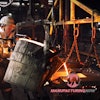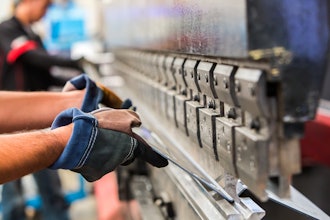Reshoring manufacturing is a growing trend in the U.S. After many years of offshoring, companies are taking an in-depth look at the benefits of manufacturing closer to their customer base, leading many companies to reshore or consider reshoring production to the U.S.
U.S. manufacturing is becoming increasingly attractive to global companies and foreign investment due to the costs and risks associated with offshoring production. Escalating offshore wages, interruptions in unstable supply chains and shifting perspectives toward using total cost for objective decision-making, are causing a growing number of manufacturers to consider locations in the U.S.
Many past decisions to offshore manufacturing were based on price alone. Today, manufacturers are looking at more than just price when considering sourcing decisions and production locations. In an interview recently published in Industry Today, Harry Moser, founder/president of the Reshoring Initiative, said companies must look at the total cost of manufacturing such as quality, intellectual-property risk, inventory-carrying costs, the complexities of having a lengthier supply chain and other external and internal business costs. And, considering abundant and low-cost U.S. energy, manufacturing in the U.S. makes good economic sense for foreign and local investment.
Reshoring a Supply-Chain Strategy
Reshoring is not a fad — it’s a real supply-chain strategy based on real economic forces. Companies are making strategic shifts to their supply chain models to take advantage of the benefits of manufacturing in the U.S. I myself see reshoring in our marketplace sometimes several times a week. Every week, we speak with a buyer that wants to source only in the U.S. They want to reshore work, usually back from China, due to quality-control issues, time-to-market, delivery issues, language barriers or simply to be closer to their customers.
When companies source in the U.S., they can take advantage of the world’s largest market and leaner supply chains, since production is located closer to consumers. This affords them the flexibility to quickly respond to customers’ changing demands, a critical component for U.S. competitiveness.
By producing closer to consumers, manufacturers are able to eliminate the large run production requirements and sizable inventories common to manufacturing offshore. They can remove intellectual property risks and realize the benefits of innovation, quality and flexibility by putting American-made ingenuity behind sourcing decisions.
E-sourcing and Restoring and Maintaining a Resilient U.S. Supply Chain Network
But what effect has years of offshoring had on the American supply chain? During the “herd” mentality of offshoring, U.S. supply chains incurred structural damage. Some U.S. manufacturers have downsized operations, closed or moved offshore. New U.S. supply chains must be restored and managed through a central channel. The inability to locate qualified U.S. suppliers and coordinate supply with demand in real-time are issues that seriously impact sourcing in the U.S. today.
Innovation and automation in U.S. based sourcing technology is necessary to achieve a level of global competitiveness. Success in U.S. sourcing demands a high-tech e-sourcing platform to connect buyers with suppliers. A cloud-based, supply chain marketplace for “Made in America” parts is critical to empowering buyer/supplier connectivity.
The manual paper methods of the past can’t compete in today’s global environment. An internet-based e-sourcing system can be accessed from anywhere and is inseparably connected with quick, easy, thorough research of new suppliers and the successful set-up of a strong supplier base. The primary factor in rebuilding the U.S. manufacturing base is in streamlining supplier discovery and delivering communication and collaboration ability to the buyer-supplier relationship.
At Fabricating.com, we believe a multi-channel platform is the most effective way to optimize coordination and productivity. The director of purchasing at Mercury Corporation told me he turned to our e-sourcing platform to access a network of qualified suppliers. He said he finds e-sourcing “a perfect way for us to reach new U.S.-based machine shops with ready capacity at the exact moment we need their capabilities.”
A typical supply chain network may rely on the skills and equipment capacity of hundreds of suppliers. Efficient supplier discovery, selection and network maintenance is essential and an online platform is needed for real-time negotiation with one or many contract manufacturers. Buyers need the ability to build strategic relationships and instantly locate and access qualified U.S. supply chain partners with the necessary capabilities to meet production requirements and time-to-market guidelines.
Multi-channeled, cloud-based sourcing technology will have a transformative impact on procurement in the U.S. By capitalizing on a high-tech e-sourcing platform, U.S. manufacturers will be able source more effectively, compete globally and revitalize the American supply chain.
Frank Russo is CEO and co-founder of Fabricating.com a cloud-based sourcing marketplace exclusively for American-made custom parts.




















